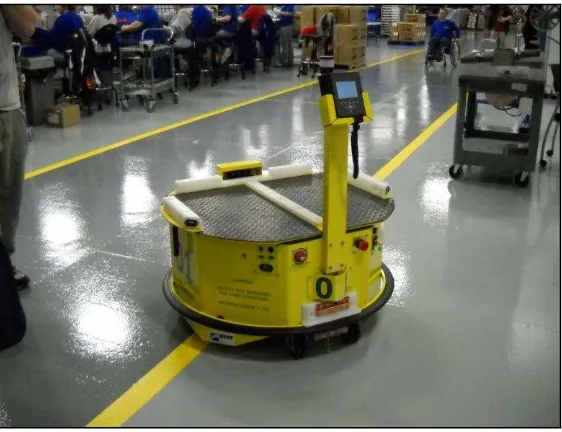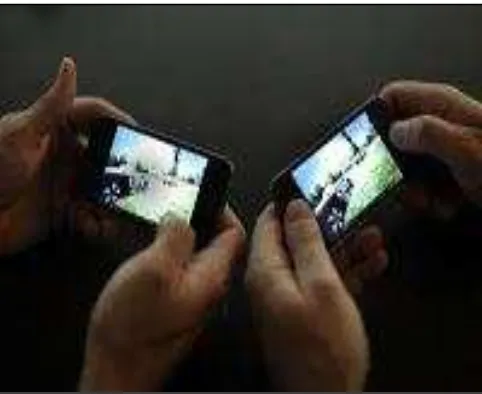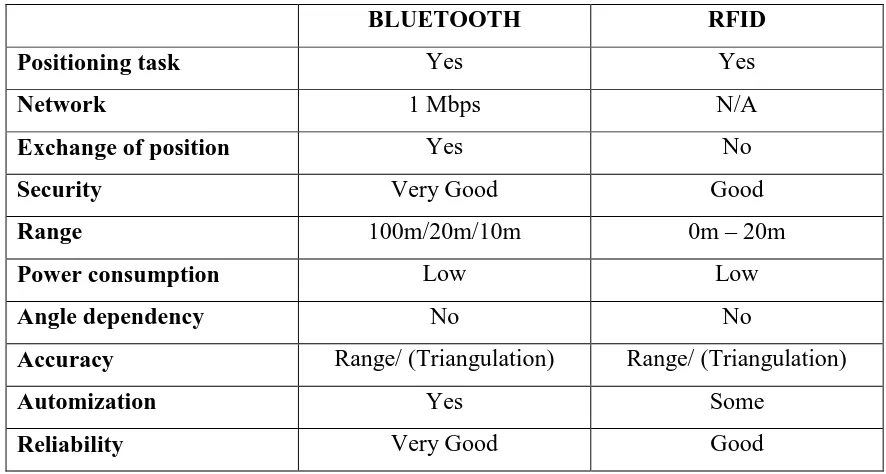DEVELOPMENT OF MOBILE ROBOT CONTROLLER
BASED ON BLUETOOTH COMMUNICATION SYSTEM
MUHAMAD ROZAIMI BIN MUHAMAD SABRI
B051110128
UNIVERSITI TEKNIKAL MALAYSIA MELAKA
DEVELOPMENT OF MOBILE ROBOT CONTROLLER BASED ON
BLUETOOTH COMMUNICATION SYSTEM
This report submitted in accordance with requirement of the Universiti Teknikal Malaysia Melaka (UTeM) for the Bachelor Degree of Manufacturing Engineering
(Robotics and Automation)(Hons.)
by
MUHAMAD ROZAIMI BIN MUHAMAD SABRI B051110128
890405075287
UNIVERSITI TEKNIKAL MALAYSIA MELAKA
BORANG PENGESAHAN STATUS LAPORAN PROJEK SARJANA MUDA
TAJUK: Development of Mobile Robot Controller Based on Bluetooth Communication System
SESI PENGAJIAN: 2013/14 Semester 2
Saya MUHAMAD ROZAIMI BIN MUHAMAD SABRI
mengaku membenarkan Laporan PSM ini disimpan di Perpustakaan Universiti Teknikal Malaysia Melaka (UTeM) dengan syarat-syarat kegunaan seperti berikut: 1. Laporan PSM adalah hak milik Universiti Teknikal Malaysia Melaka dan penulis. 2. Perpustakaan Universiti Teknikal Malaysia Melaka dibenarkan membuat salinan
untuk tujuan pengajian sahaja dengan izin penulis.
3. Perpustakaan dibenarkan membuat salinan laporan PSM ini sebagai bahan pertukaran antara institusi pengajian tinggi. atau kepentingan Malaysia sebagaimana yang termaktub dalam AKTA RAHSIA RASMI 1972)
(Mengandungi maklumat TERHAD yang telah ditentukan oleh organisasi/badan di mana penyelidikan dijalankan)
Alamat Tetap:
DECLARATION
I hereby, declared this report entitled “DEVELOPMENT OF MOBILE ROBOT
CONTROLLER BASED ON BLUETOOTH COMMUNICATION SYSTEM” is the results of my own research except as cited in references.
Signature : ……….
Author‟s Name : MUHAMAD ROZAIMI BIN MUHAMAD SABRI
APPROVAL
This report is submitted to the Faculty of Manufacturing Engineering of UTeM as a partial fulfilment of the requirements for the degree of Bachelor of Manufacturing Engineering (Robotics and Automation) (Hons.). The member of the supervisory is as follow:
i
ABSTRACT
iii
ABSTRAK
iv
v
DEDICATION
vi
ACKNOWLEDGEMENT
vii
LIST OF ABBREVIATIONS, SYMBOLS AND NOMENCLATURES XVI
CHAPTER 1
2.1.2 Line following system 11
2.1.3 Laser guidance system 12
2.1.4 Vision guidance system 12
viii
2.3.1 Wireless navigation system 15
2.3.2 Mobile phone based guidance 16
2.3.3 Bluetooth communication system 18
2.4 Summary 19
CHAPTER 3
3.1 Introduction 20
3.2 Overall methodology 20
3.3 Planning 21
3.3.1 Bill of material 23
3.3.1.1 Arduino microcontroller 23
3.3.1.2 Bluetooth V3 dongle 24
3.3.1.3 Android smartphone 25
3.4 Development 26
3.4.1 Software development (Android application) 27
3.4.2 Hardware development (Arduino Microcontroller) 29
3.5 Testing and data analysis 32
3.5.1 Navigation testing 32
3.5.1.1 Experimental method 33
3.6 Summary 34
CHAPTER 4
4.1 Software development (Android application) 35
4.1.1 Apps programming 38
4.1.2 Preliminary test 41
4.1.2.1 Communication with Arduino 41 4.1.2.2 Result analysis 45 4.2 Hardware development (Arduino Microcontroller) 46
4.2.1 Mobile robot programming 47
4.2.2 Experimental result 49
ix
4.2.2.1.1Result analysis 51
4.2.2.2 Reverse test 53
4.2.2.2.1 Result analysis 55
4.2.2.3 Right and left turn 57
4.2.2.3.1Result analysis 61
4.4 Navigation test 65
4.4.1 Experimental result 66
4.4.2 Result analysis 69
B MIT App Inventor code designer block C Arduino code in LED testing
x
LIST OF TABLES
1.1 Summary of evaluation for Bluetooth and RFID 5
3.1 Port on Arduino UNO description 32
3.2 Connection between Motor Controller and Arduino UNO 34
4.1 Instruction to control LED 43
4.2 Instruction to navigate the mobile robot 47
4.3 Displacement error in forward trajectories 52
4.4 Displacement error in reverse trajectories 56
xi
LIST OF FIGURES
1.1 The AGV use in production plant 2
1.2 The examples of games controlling method using hand gesture 3
1.3 Topologies of network Bluetooth devices 6
3.1 The overall methodology of the project 21
3.2 Flowchart in planning process 22
3.3 Arduino UNO board 24
3.4 Bluetooth V3 Dongle 25
3.5 Ninetology Pallete smartphone 26
3.6 Flowchart in development process 27
3.7 Flowchart for software development process 29
3.8 Operational block diagram for data transmission 31
3.9 Flowchart for hardware development process 32
3.10 Operational block diagram 32
3.11 A “Z” shaped path designed to be used in the navigation testing 33
4.1 The IDE used to create the apps 36
4.2 GUI designer in MIT App Inventor 2 37
xii
4.4 Flowchart of development apps programming 38
4.5 Initialization component for the apps 39
4.6 Bluetooth connection block 39
4.7 Instruction algorithm 40
4.8 Schematic circuits for the testing 41
4.9 Pin connection between Bluetooth V3 dongle and Arduino UNO 42
4.10 Experimental setup for connection testing 43
4.11 Arduino code written in Arduino IDE 44
4.12 Result of the testing 45
4.13 Mobile robot used in the experiment 46
4.14 Flowchart of input algorithm 48
4.15 Arduino programming for mobile robot written in the Arduino IDE 49
4.16 Experiment setup for forward direction 50
4.17 Result of forward direction 51
4.18 Robot position in forward experiment 52
4.19 The measurement of displacement error 53
4.20 Experiment setup of reverse direction 54
4.21 Result of reverse direction 55
4.22 Robot position in reverse experiment 56
4.23 The measurement of displacement error 57
xiii
4.25 Result of right and left turn in first and second attempts 59 4.26 Result of right and left turn in third and fourth attempts 60 4.27 Result of right and left turn in fifth attempts 61
4.28 Robot initial position at 90o 62
4.29 Final position of the mobile robot 63
4.30 The measurement of degrees in the third experiment of right turning 64 4.31 The measurement of degrees in the fourth experiment of right turning 64 4.32 The measurement of degrees in the fifth experiment of left turning 65
4.33 Experimental setup for navigation testing 66
4.34 Navigation result of the first experiment 67
4.35 Navigation result of the second experiment 67
4.36 Navigation result of the third experiment 68
4.37 Navigation result of the fourth experiment 68
4.38 Navigation result of the fifth experiment 69
4.39 The robot initial position at Starting Point 70
4.40 The robot arrived at the End Point 70
4.41 The robot movement in forward direction 71
4.42 Robot stops at certain distance according to the smartphone position 71
4.43 The robot turn right at the first junction 72
4.44 The robot turn left at the second junction 72
xvi
LIST OF ABBREVIATIONS, SYMBOLS AND
NOMENCLATURES
AGV - Automated Guided Vehicle RFID - Radio Frequency Identification LADAR - Light Detection and Ranging CCD - Charge-Coupled Device LED - Light Emitter Diode
HF - High Frequency
WSN - Wireless Sensor Network PLC - Programmable Logic Controller GPS - Global Positioning System SMS - Short Messaging System
OS - Operating System
FYP - Final Year Project GUI - Graphical User Interface PCB - Printed Circuit Board
AMC - Advance Manufacturing Centre Kbps - Kilo byte per second
xvii
MHz - Mega hertz
1
CHAPTER 1
INTRODUCTION
In this chapter the introduction of the mobile robot which includes the background of (Automated Guided Vehicle) AGV is discussed. Next, the motivation which is the project inspiration is discussed along in this chapter. The problem statement, objectives, scopes and report structure is also been discussed.
1.1 Background
2
Automated Guided Vehicle (AGV) is a material handling systems that uses independently operated, self-propelled vehicles guided along defined pathways (Groover, 2008). AGV mostly is used in manufacturing industries nowadays since it is more reliable in moving raw materials or finished products. Due to its effective working abilities, AGV play as key elements in enhancing lean manufacturing environments. It is because, material handling process is one of the important processes in the manufacturing, the implementation of AGV also will increase the productivity especially in material handling process. Normally, the process will took part from raw material through the finished goods. Throughout the processes, workers commonly struggle with fatigue which could slow down the process of delivery. So, the implementation of AGV will be able to eliminate the problem since AGV can operate continuously. Figure 1.1 shows the example of AGV use in manufacturing fields.
Figure 1.1: AGV use in production plant. (Source: http://news.thomasnet.com/fullstory/Intelligent-AGV-enhances-lean-manufacturing-environments-582126)
3
towing a trolley into production line. Basically, AGV is operated with the help of smart systems that developed specifically for the AGV. In current technology of AGV system, it is navigating through the uses of several technologies such as embedded guided wires, paint strips, self-guided vehicles etc.
The goal of this project is to develop a system that can control the navigation of mobile robot through the use of Bluetooth smartphone. Instead of using sensors to track the guided paths, the navigation of mobile robot can be controlled by using smartphones that has Bluetooth connectivity. By using this technique, it is believe that the handling of mobile robot navigation would become easier since the method to be use is using new technology.
1.2 Motivation
4
Figure 1.2: The example of games controlling method using hand gesture. (Source: http://news.paktron.net/2011/06/90-percent-of-gamers-will-be-on.html)
1.2.1 Why Bluetooth?
5
discovery operation that will probably reveal several other Bluetooth devices within range. According to You et al. (2006), radio control signal systems have limited data transmission capacities compared to Bluetooth which has full duplex data transmission at 115.2 Kbps. Meanwhile in the used of infrared rays, it requires a clear line-of-sight to enable the AGV to move. Table 1.1 illustrates the summary of the evaluation between Bluetooth and Radio Frequency Identification (RFID) communication systems.
Table 1.1: Summary of evaluation for Bluetooth and RFID. (Source: Hallberg and Nilsson, 2002) BLUETOOTH RFID
Positioning task Yes Yes
Network 1 Mbps N/A
Exchange of position Yes No
Security Very Good Good
Range 100m/20m/10m 0m – 20m
Power consumption Low Low
Angle dependency No No
Accuracy Range/ (Triangulation) Range/ (Triangulation)
Automization Yes Some
Reliability Very Good Good


